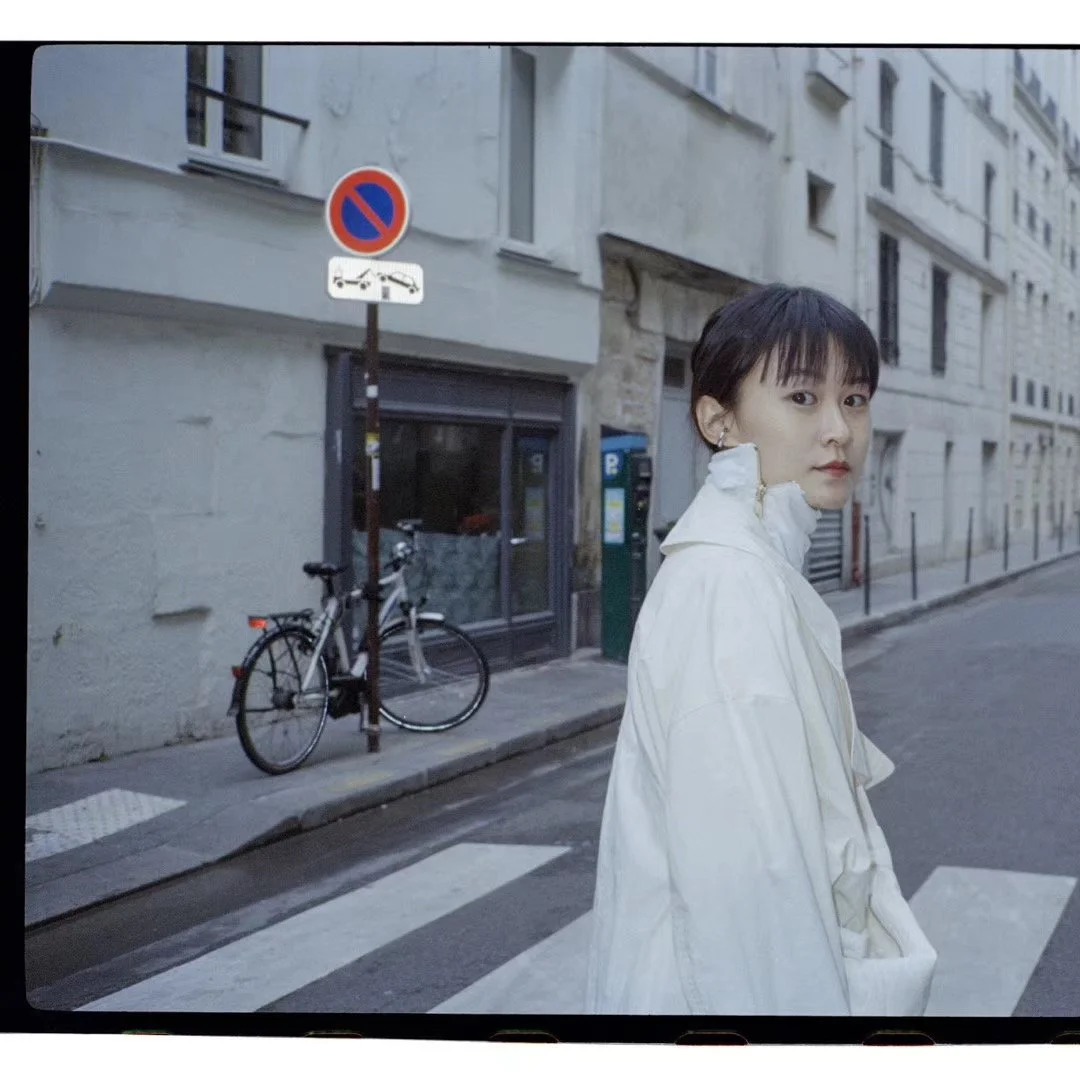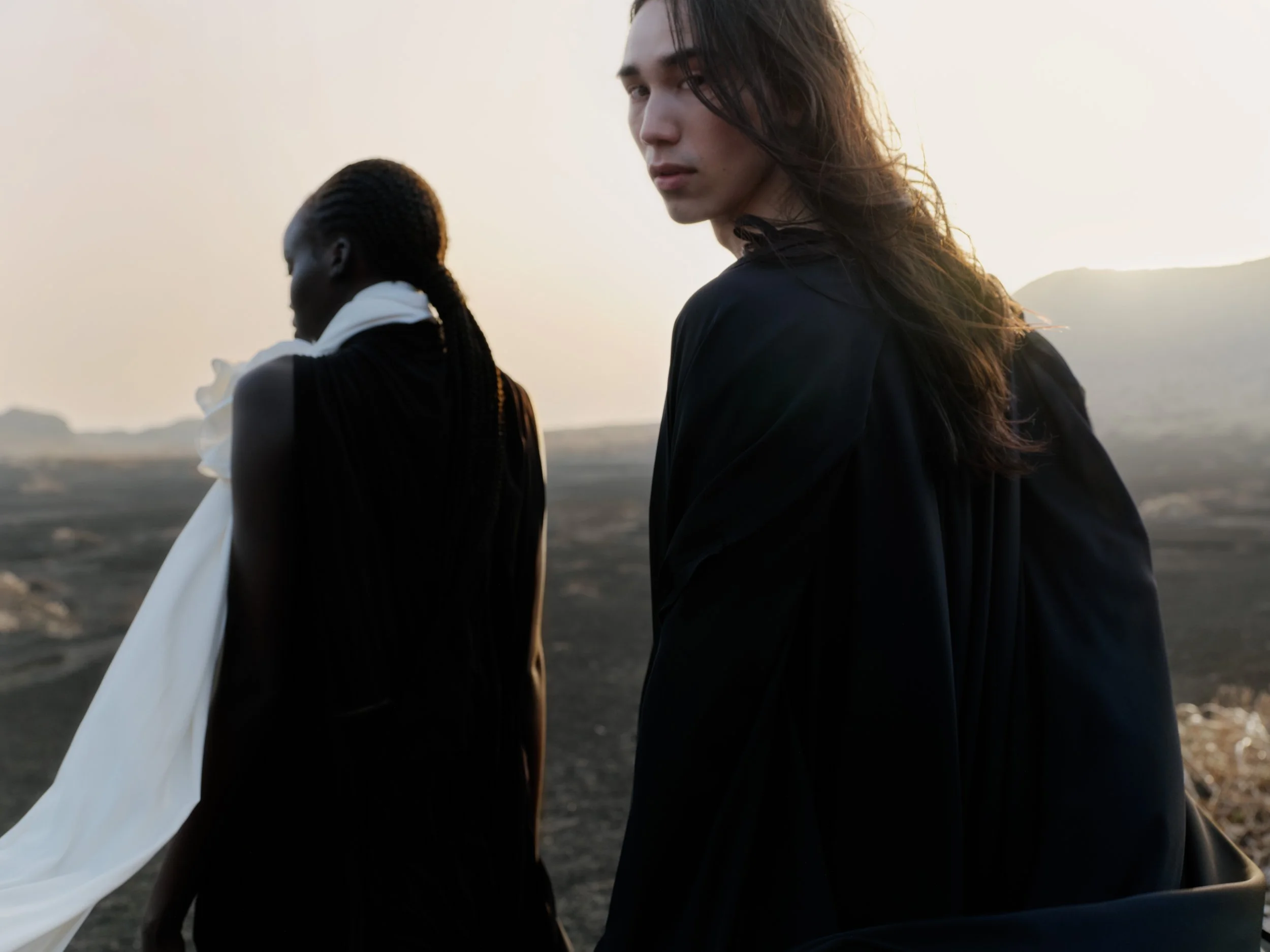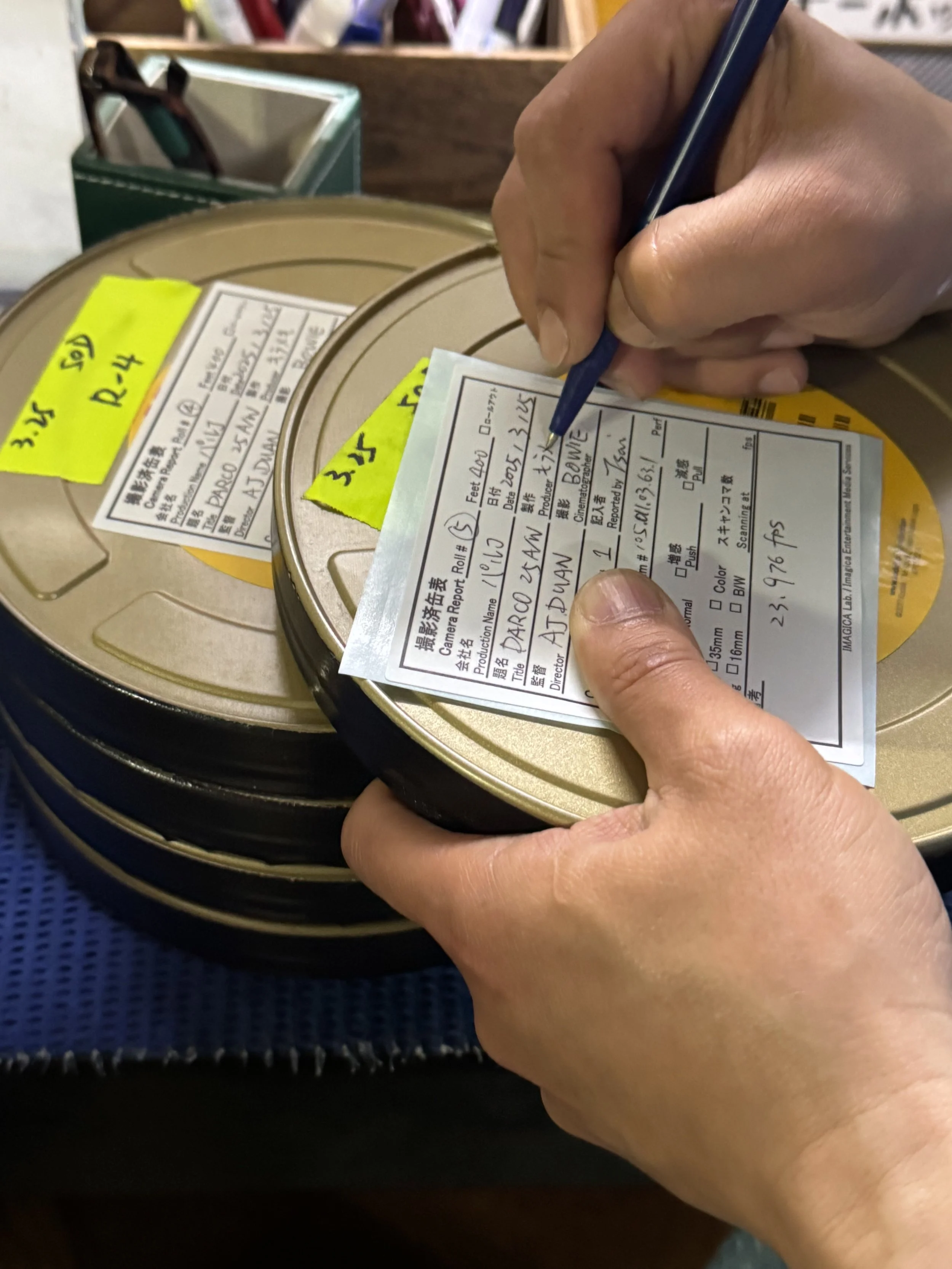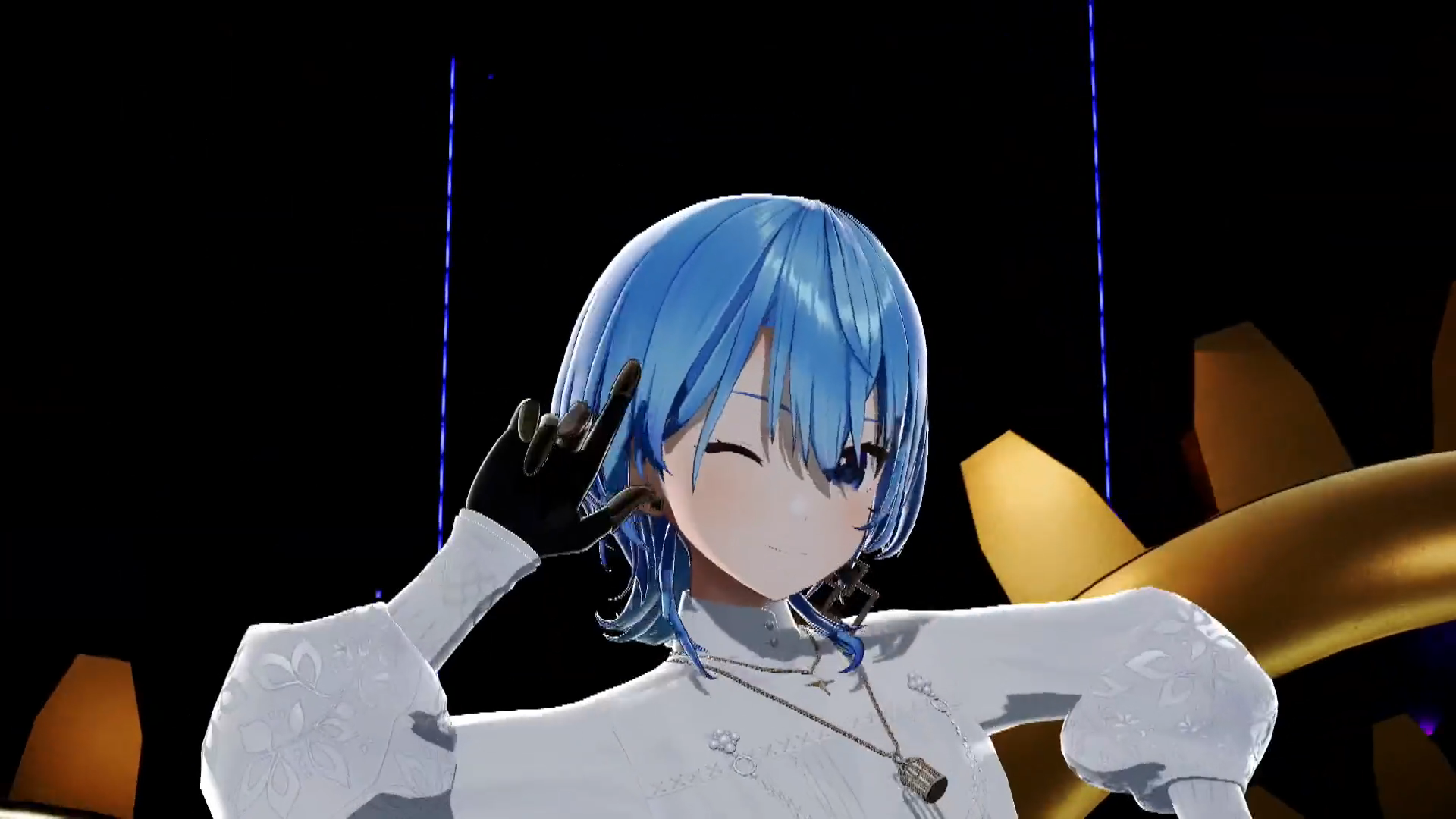BEHIND THE LENS: SABUKARU MEETS AJ DUAN

The turn of each season is marked in every fashion lover’s calendar. New shows, collections, presentations; PARCO’s editorials are always the highlight. PARCO’s Autumn 2025 is no different — vivid, impactful and visually stunning, ‘Echoes of self’ directed by AJ Duan is one of our favorite media releases this year.
ファッションにとって、季節の変わり目ほど、心を踊らされることはない。シーズンのランウェイショーから新コレクションの展示会まで、この時期ならではの彩りを魅せる。その中でもPARCOのエディトリアルはハイライトに当たる。そんなPARCOの2025年オータム・ビジュアル「Echoes of self」は、昨今勢いを増しているAJ Duanによりディレクションされ、鮮やかでインパクトがあり、視覚に余儀なく訴えるビジュアルに仕上がっている。


Born in Guangzhou and based in Shanghai, AJ Duan is the guiding hand behind so many of high fashion’s videos and advertising campaigns. But even with her name in the credits of so many brand’s short films, features and promotional materials, the master herself remains an enigma.
中国の広州で生まれ、上海に拠点を老いているAJ Duanは、多くのファッション・ムービーやビジュアル・キャンペーンを手掛けている。しかし、街中のサイネージや画面の広告枠で見られるムービーやビジュアルを多く仕掛けているにも関わらず、彼女は未だ謎に包まれた存在。
For those unfamiliar, perhaps the best introduction to AJ's work is the aforementioned recent project with PARCO — ‘Echoes of self’. Shot on Izu Ōshima island, the film blends natural imagery with striking human silhouettes draped in loose-fitting, monochromatic clothing, creating a dream-like and absurd atmosphere. Booming industrial resonations and waves violently crashing onto rocks contrast with the narration of a gentle whisper in the background. The movie is an exploration of both the viewer’s identity and the human connection to nature: an artwork whose meaning changes from person to person.
まだ馴染みのない人にとって、PARCOとAJの最新プロジェクトEchoes of selfは、彼女を紹介するにあたってピッタリの作品。伊豆大島を舞台に撮影したムービーは、ゆったりとしたシルエットとモノクロな色合いが印象的な服を着せたモデルと自然をバックドロップに落とし込んだ幻想的かつ遊び心くすぐるムード。岩打つ大波が広げる工業的な音波とは対に、優しく囁かれるナレーション。いずれもアイデンティティと自然の繋がりを探求するこのムービーを引き立てており、見る人それぞれで見出す意味が変わる作品となっている。
For over 50 years, PARCO has worked with the most avant-garde creatives of the time to blur the lines between art and marketing. From Eiko Ishioka casting Faye Dunaway with a boiled egg to Tsuguya Inoue’s drowning salaryman — decades-old media seems futuristic even by today’s standards. With this progressiveness also came expressions and themes that may have seemed completely foreign by contemporary standards. Photographing multiracial models, near-complete nudity, messages of freedom, sexuality and feminism; PARCO isn’t just a department store — they’re an incubating space for culture, talent, and creativity, truly a landmark organization of the Tokyo scene. PARCO’s latest pick to carry on their rich history in AJ Duan is the signal to us at sabukaru that she’s next up in the spotlight.
半世紀以上に渡り、アートと広告の境界線を歩み、その時代のカリスマ・クリエイターの数々と共にアバンギャルドを切り開いてきたPARCO。石岡瑛子が手掛けた卵とフェイ・ダナウェイのエディトリアルから、井上嗣也監督のハドソン川を泳ぐサラリーマンのビジュアルまで、一昔前のビジュアルは、今も尚新鮮に感じられ、時に近未来的にも思える。時代に囚われることなくクリエイションを勤めてきた先に、現代の感性では全く異質とも思われる表現やテーマ、そしてスタンダードが生まれた。多国籍なキャストの起用、自由を掲げるメッセージング、そして性とフェミニズムと向き合う姿勢。従来の百貨店では考えられない、文化、才能、そして創造性のインキュベーション・スペースとなり、今や東京から切り離せない重要なランドマークとなった。そんなPARCOの豊かな歴史を受け継ぐAJの抜擢は、sabukaru編集部にとっても、次なるカリスマとしてスポットライトを浴びる存在であるというシグナルと感じている。
Even though AJ’s films are only a couple minutes long, you could watch them for hours and still be fascinated by the abstract sounds, entrancing motions and poetic complexities. Whether it be an advertisement or her personal work — every moment, shot or picture has a raw aesthetic that captivates you in a uniquely ‘AJ’ way. Not only are the videos completely hypnotizing, but they also prompt so many questions. Who is the director, what are her inspirations, what message is she trying to convey, what steps is she going to take next?
ファッションについて取り上げてきたsabukaruだが、数々の魅力的キャンペーンを手掛けてきた昨今勢いを増すクリエイターについて耳にし、ジッとはしていられなかった。今回PARCOの協力のもと、インタビューの機会をいただき、AJと彼女の活動について深ぼる運びとなり、カメラレンズの裏側に隠された謎の幾つかを解き明かした。
For those of us unfamiliar, who are you, and what do you do?
まだご存じない方のために、簡単な自己紹介をお願いします。
I'm AJ and I'm a short film director and creator.
はじめまして、AJです。短編ムービーのディレクターとクリエイターをしてます。
Creative direction is a very unique field, and fashion visual direction is such a niche section of that — could you tell us about your creative journey and how you got into this field? Was it something that you always wanted to do?
クリエイティブディレクションは、クリエイティブという分野の中でも非常にニッチな領域ですね。これまで歩んできたクリエイティブ・ジャーニーについて、この世界にどのようにして入ったのか教えていただけますか?
Honestly, I have always been into this kind of thing. I started out studying films and documentaries, so visual storytelling is something I connected with from really early on. So, as for why I ended up in advertising and fashion filming, I think I just always liked short film-related stuff, whether it's short or experimental, even commercials. These kinds of formats feel really natural to me.
正直なところ、私はいつもこの手のことに夢中でした。最初は映画やドキュメンタリーの勉強をしていたから、ビジュアルストーリーテリングは本当に早い時期から親しみのあるもので。なぜ広告やファッションの撮影に携わるようになったかというと、短編であれ、実験的なものであれ、コマーシャルであれ、短編ムービー関連のものがずっと好きだったんだと思うんです。こういったフォーマットは、私にとって本当に身近に感じるもので。

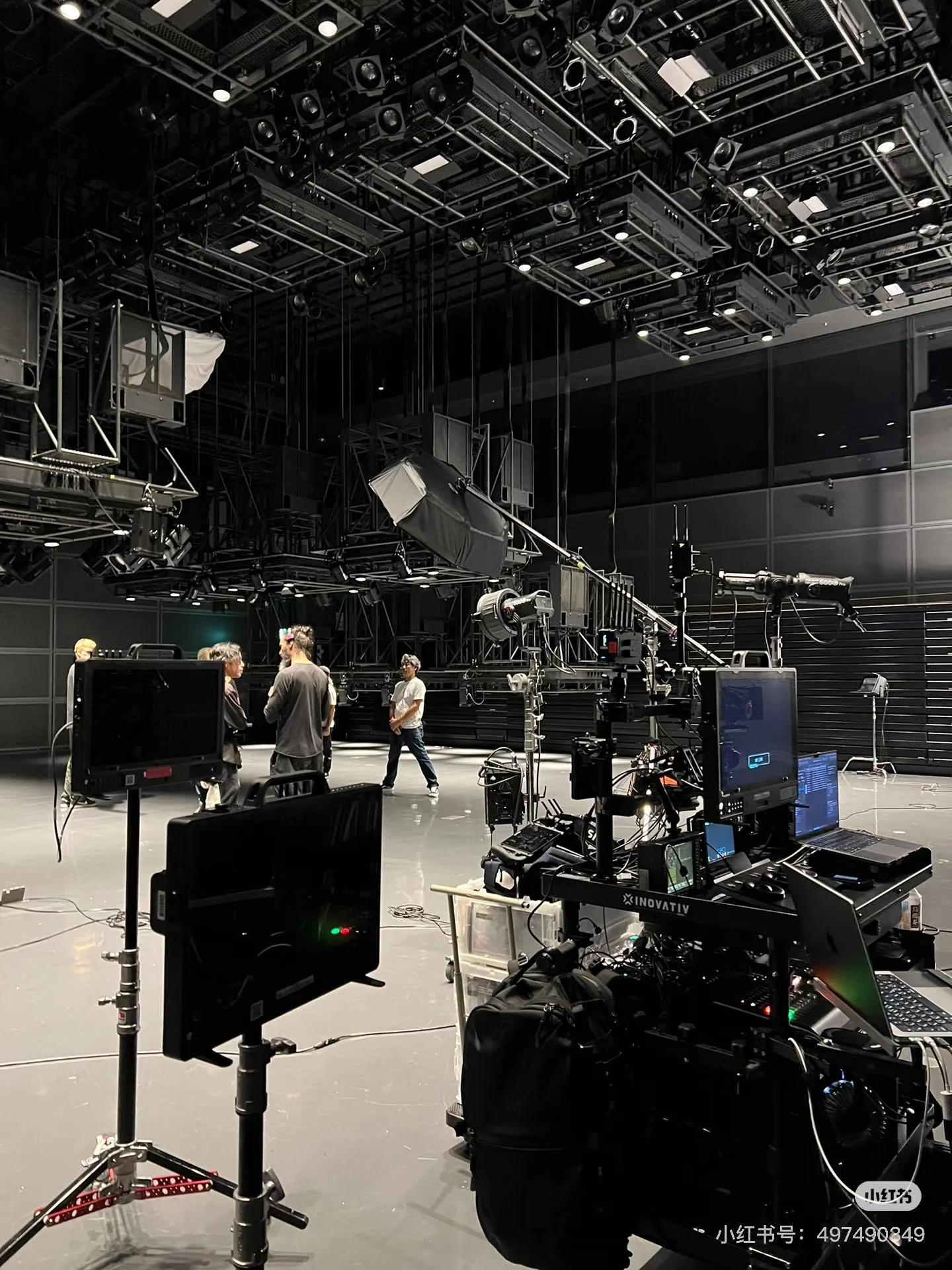

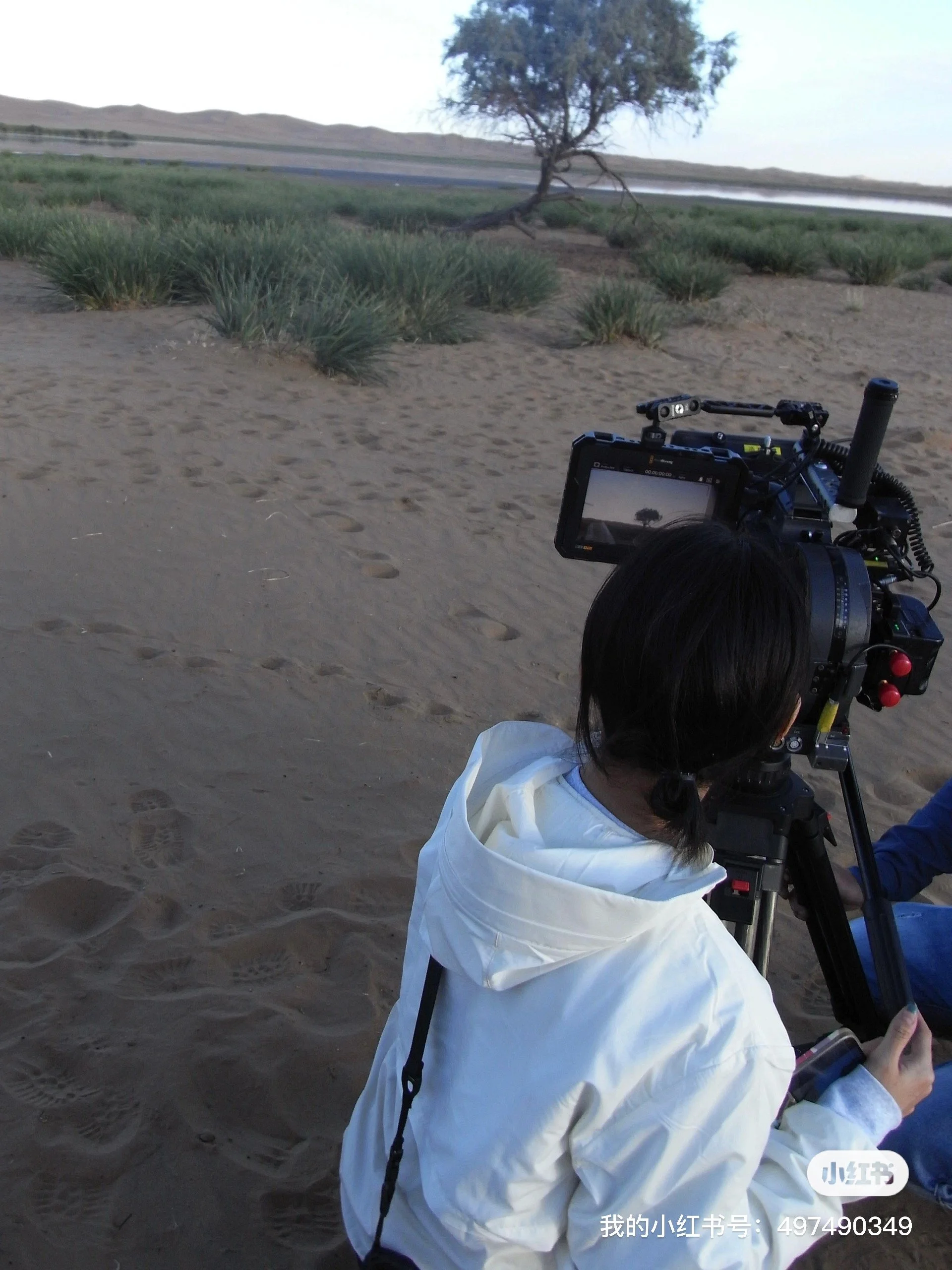

So, most of the time when I direct ads or create fashion films, the creative concept is already there. For example, because my rule is to bring that [concept I have in mind] to life, visually. But, when I get the chance to be involved from the beginning, like this time with PARCO, I can just [create] the concept for myself.
なので、広告をディレクションしたり、ファッション・フィルムを制作するとき、大抵クリエイティブなコンセプトがすぐ頭に浮かぶんです。私の中でのルールなんですけど、その[頭に浮かんだコンセプトを]視覚的に実現させること。今回のPARCOとのプロジェクトように、最初から制作に携われるチャンスがある場合、自分でコンセプトを一から作るようにしてます。
[When] I get to build the creative idea myself, I get super excited, because it's really rare. That's when I get to bring in my own imagination, my taste, and everything I like/love visually. That kind of freedom doesn’t come so often, so when it does, I really appreciate it.
クリエイティブなアイデアを一から自分で作り上げることができた時、とても興奮するんです。自分の想像力、センス、視覚的に好きなもの、愛しているものを全てを持ち込める。そんな自由は滅多にないので、そのようなときは本当に感謝の思いしかないです。
Do you have any idols, heroes, or people you look up to in your work? When you start a project, what do you draw inspiration from?
尊敬するアイドルや個人的なヒーロー等はいますか?プロジェクトを始める際、どういったものからインスピレーションを得ていますか?
I really look up to big directors, like Ingmar Bergman, Andrei Tarkovsky, Sofia Coppola. Some things aren't really about telling a story. Bergman’s films are more about feelings, memories, and silence. In Stalker [1979], for example, Tarkovsky… Have you guys seen that film? Like that film really makes me realize how powerful it is to just leave things unsaid. The film's got many long takes, like no words, the characters’ just walking around, but that kind of silence, I think, is not always about giving an answer to audiences; it’s all about the search, all about the journey they're going through.
イングマール・ベルイマン、アンドレイ・タルコフスキー、ソフィア・コッポラのような大監督を本当に尊敬していて。語ることが全てじゃない。ベルイマンの作品は、感情や記憶、そして沈黙をテーマにしているんです。例えば、タルコフスキーの『ストーカー(1979年)』... 皆さん、ご覧になりました?あの映画を観ると、何も語らないことがどれだけ力強いことなのかがよくわかる。あの映画はロング・テイクが多くて、言葉も発せず、登場人物はただ歩き回っているだけなんだけど、漂う沈黙は必ずしも視聴者に答えを差し出すためのものではなくて、探求そのもの、彼らが経験する旅が全てなんです。
So honestly, there are so many amazing ads and short films today, even ones we can just watch on Instagram, and I try to keep up with what people are doing right now. So when I'm working on my own stuff, I don't really go overboard looking for references, but if I need to get some inspiration, I will look at maybe some photographers’ work or movies that have a singular vibe. And it's more about getting a feel for the kind of mood I want to create. From then on, everything just starts to happen.
昨今インスタグラムのコンテンツさえ、素晴らしい広告やショートフィルムが増えてて、そういうものをインプットするようにしてます。自分の作品に取り組んでいるときは、参考になるものを求め過ぎないようにはしているけれど、インスピレーションを得たいときは、写真家の作品や独特な雰囲気があるムービーを見たりしてます。そういったところから、自分が作りたいムードのようなものを感じ取っていて、そこからクリエイションが始まるんです。
For example, for PARCO, I went back to rewatch the Stalker, and I also checked out the Shoji Ōtake’s photos. So Shoji Ōtake’s work has had a real impact on me. I love how he framed his photographs, like how he plays with the compositions, and how he placed characters in the space. So, this helped me think about how I want to frame certain shots in certain places, especially when I wanted to create a moment in stillness.
例えば、PARCOのプロジェクトの為に『ストーカー』を見返したし、大竹省二の写真もチェックしました。なので、大竹省二の作品には本当に影響をされてますね。構図の遊び方から登場人物の配置まで、特に静寂の瞬間を作りたいとき、特定の場所で特定のショットをどのようにフレーミングしたらいいか、凄く参考になりました。
How do you come up with the ideas for your films or editorials? When you first read a client prompt, what thoughts go through your head and how do you actualize them into a video?
ムービーやエディトリアルのアイデアはどのようにして生まれるのですか?どのような考えが頭をよぎり、それをどのようにビデオにするものですか?
For [working with] PARCO this time, when I first got in touch with them, they didn't really have like a big concept, [but rather] just a solid [foundation for a] concept. They wanted to, generally [speaking about the] direction, they wanted to shoot in nature at first, and they wanted to explore the ideas around how we're stepping away from overly loud cities, the noise, and digital life.
今回PARCOのプロジェクトに関わるにあたって、連絡を最初に取り始めた時点では、特に大きなコンセプトを持っていたわけではなくて。ジェネラルな(方向性)は基盤にあって、それは自然の中での撮影と、人が騒がしい都市やノイズ、そしてデジタルライフから離れていっている現状を探求したいというこの二つだけで。




So, since I also liked shooting in nature, I really [do in fact ] enjoy shooting in nature, not just for the visuals, [but rather] I think it's just because in nature, it changes the pace. Like things really slow down and nature can speak for itself. Maybe in nature, there is more space to think, to breathe, and that kind of environment just naturally makes me want to create. So this time [around], the idea is of the internal echoes.
個人的に自然の中で撮影するのも好きで。写真写りが良いってだけでなく、自然の中で撮影するのがは本当に楽しくて。自然の中では時間がゆっくり流れている感覚があって、自然の美しさがより引き立つ。自然の中では、考える時間も呼吸するスペースも広がる感じがして、そういう環境にいると創作意欲が湧いてくるのかもしれない。だから今回は、内なるエコーをイメージしたんです。
I wasn't trying to tell a really clear story. I was more interested in the mood, the space, like how to interact with the models, with the space, and how certain moments can simply stay with you, certain shots. Like for me, that's usually how it starts, not just by reading the script, but with a feeling, with an instance.
明確なストーリーを語りたかったわけではないんです。それよりも、ムードや空間、モデルとスペースの対話、ある瞬間/ショットがどのように視聴者の心に残るのかに興味があったんです。私のクリエイションに関しては、台本を読むことから得るものより、感覚やインスタンスから始まることが多いんです。
Your videos are really abstract, but there is something distinctly AJ to them. Could you describe the ‘AJ aesthetic’ to us?
AJさんのビデオは抽象的ですが、そこには明確にAJらしさがあります。「AJの美学」について教えていただけますか?
I think this is a tricky one because I don't know if I [can] clearly define my aesthetics. But I guess my stuff does lean kind of abstract, as you said. I like things that feel really quiet and kind of lingering, you know? Like not super direct, you feel it instead of being told what it is. So, visually I like to go into really calm, hazing, natural environments, natural light, and kind of softness inside it.
自分でも自分の美学を明確に定義することができなくて。でも、仰っていたように、私の作品は抽象的なものが多いのかもしれないですね。静かで、何か余韻が残るものが好きなんですよ。超まっすぐに、それが何であるか伝えるんじゃなくて、感じられるもの。なので、ビジュアル的な観点でいうと、穏やかで、ぼんやりしていたり、自然な環境、自然光、そして何か柔らかさがあるものが好きなんです。





I like getting people instanced in the frame, without just trying too hard to tell what they are doing. So, nothing too polished. I don't like things [that are] too polished. I would rather [the audience to] get the feeling first; really authentic feelings, really honest.
被写体の動機を頑張りすぎない程度に伝えて、カメラのフレーム内にインスタンスとして配置するのが好きなんです。個人的に洗練されすぎたものが好きではないので、それも気にしてますね。視聴者には、まずフィーリングを感じてもらいたいんです。純粋で偽りのないフィーリングを。
What does the ‘AJ aesthetic’ mean for you personally? Would you say your day-to-day lifestyle and your personal fashion style are consistent with your artistic expression?
「AJの美学」はご自身にとって個人的にどのような意味を持ちますか?AJさんの日常生活や個人のファッションスタイルは、あなたの芸術的表現と一貫しているように思えますか?
I think my personal style is kind of simple. I like minimal and I don't like things that’re too polished as I said. I don't want things that are trying too hard. I prefer when something is really subtle and authentic. And yeah, I think my wardrobe, and my style is kind of simple, as well. I like comfortable clothes and simple shapes, but have some design, and also the texture is what I care.
私個人的なファッション・スタイルは割とシンプルだと思います。ミニマルなものが好きだし、さっきも言ったように、洗練されすぎているもの/頑張り過ぎているものが好きじゃなくて。繊細で偽りのないものが好きなんです。私のワードローブを覗いてもわかると思うのですが、スタイルはシンプル。着心地が良くて、シンプルな造形なんだけど、デザイン性と質感には拘っている。





The word ‘self’ implies that this project is very personal to you. Could you explain what this project means for you, and the inspirations behind it?
タイトルにある「自己(Self)」という言葉は、AJさんにとって個人的なものであることを示唆しています。このプロジェクトがご自身にとってどのような意味を持つのか、そしてその背景にあるインスピレーションについて教えていただけますか?
So for me, this whole thing really comes down to self-exploration, you know? Like, who we are, really. I think that's something everyone is kind of questioning, especially these days. We're always trying to figure out who we are, and how much of that is shaped by everything around us. So that's why I started thinking about echoes.
このプロジェクトは根底には自己探求というテーマがあるんです。自分たちが本当は何者なのか?特に最近は疑問に思っている人が増えていると思うんです。私たちは、自分が何者で、環境や周りのものが、どれだけ自分たちを形作っているのか考えている。これがエコーについて考え出すようになった理由で。



I think this whole project is really about self-exploration. Like the word echoes, to me, I don't know, I just keep thinking about how echoes work. You hear something, but it's already bounced around, maybe being destroyed, already. But I thought that’s kind of what the self feels like sometimes. It's not just one clear thing. It's built from all these bits. Stuff people said to you, things we're going through, memories, dreams that just, you know, stick. Slowly these things shape who we are today, and even if it means we are not aware of that.
このプロジェクトは、自己探求の為のものだと思っていて。エコーそのものがどのように働いているのか、良くわからないですけど、私の中では疑問に思っていて。何か聞こえたと思っても、それはもう既に反響した音波で、もしかしたら、それは何か既に破壊されたものなのかもしれない。でも、それは何か己の感覚に似ていると思ったんです。ひとつの明確なものではない。色んな断片からできている。人から言われたこと、何か経験したこと、記憶、夢、そういったものが、少しずつ、私たちを形作っていく。たとえそれが、自分では気づかないことであってもね。

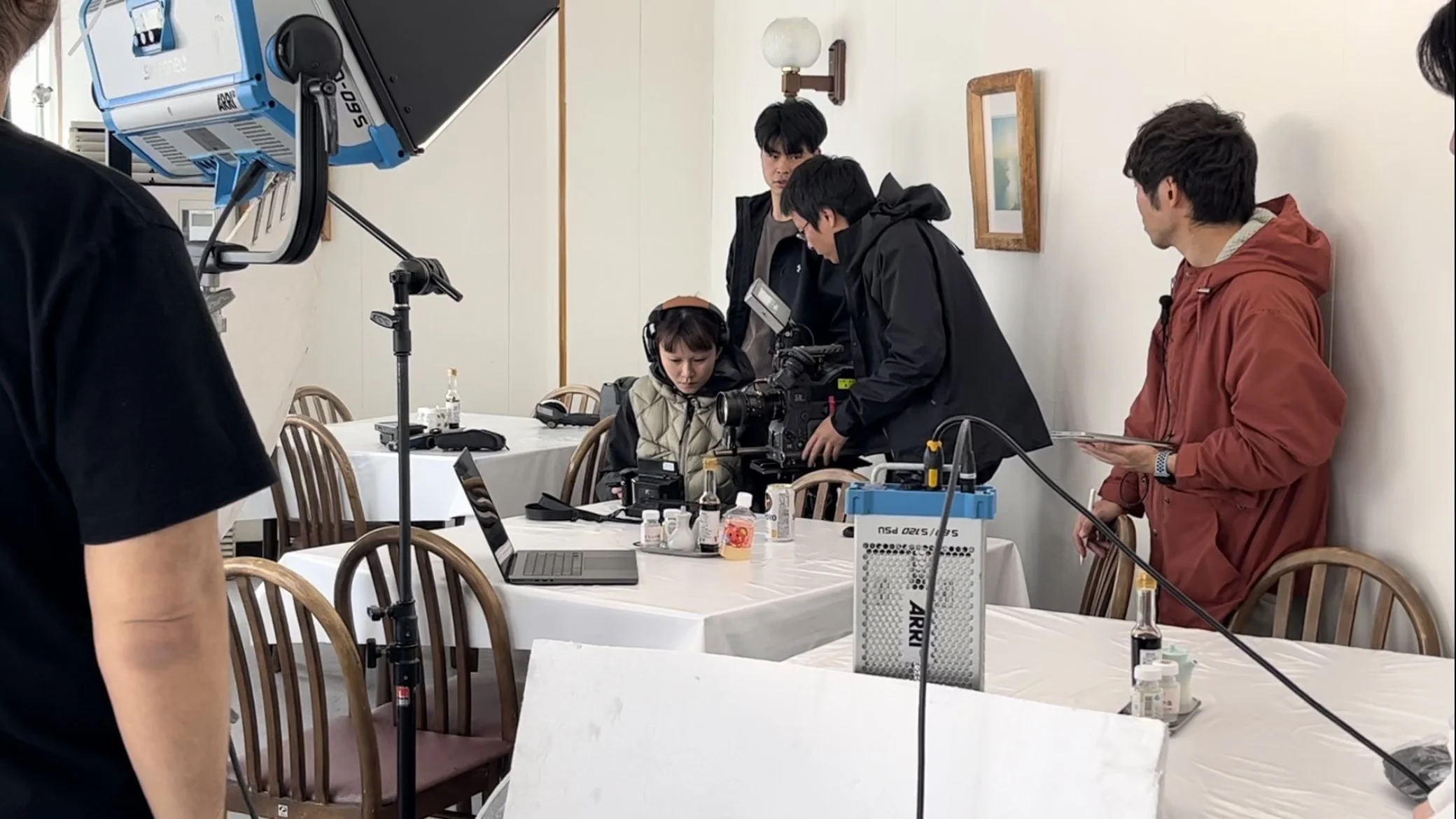
So yeah, that's why I call it echoes of selves. To slow down, maybe just ask what part of this is real to me, what makes me, and what part is just noise and something we have been carrying around.
だからこのプロジェクトをEchoes of selfと題したんです。スピードを落として、どの部分が自分にとって偽りのない本当なのか、何が自分を形作っているのか、そしてどの部分が単なるノイズで、私たちが抱えてきたものなのかを問いただす。
The film is only a minute long, but there’s so many details in it that we could watch it for hours. What do you most want viewers to notice when they watch it, and what message do you want them to take away from ‘Echoes of self’?
ムービーは1分しかありませんが、何時間でも見続けられるほど多くのディテールが含まれていますね。視聴者に気づいて欲しいディテール、そしてEchoes of selfから何を感じ取ってほしいですか?
I think this film is more about the experience than the message. It's sort of a poetic visual thing; it’s sensory. I want people to feel the openness of nature… when you can see nature, you can hear it as well. I focused on the buildup of small sounds of nature around us, like the wind, the oceans, even birds, and gave nature a really big space. And when we slow down to really pay attention to the details, these details can feel a lot bigger. So that's what I hope people take away. Not a meaning, but more the feeling.
このムービーに関しては、メッセージを読み取ってもらうよりも体験に重きを置いていて。詩を映像化したようなもので、感覚に訴えているんです。自然の開放感を感じてほしくて......自然を目で見れば、それを聞くこともできる。風の音、海の音、鳥の鳴き声など、私たちの周りにある小さな自然の音を積み重ね耳を澄ますことによって、段々と大きな自然の空間が生まれる。スピードを落として細部に注意を払うことで、様々なディテールがより大きく感じられるようになる。視聴者に、そこから何か感じ取ってくれると嬉しいです。意味ではなく感覚をね。
There’s so many beautiful shots in the film. Do you have a favorite moment in it, and if so, why?
ムービーには多くの美しいショットがあります。お気に入りの瞬間はありますか?あれば詳しく教えてください。
Yeah. Because a lot of shots I like so much [it’s hard to pick], but one of my most [favorite shots] is the moment when there’s different figures of the models standing in one frame. We shot it with a fixed camera on top of the volcano in Oshima, and the wind that day was really strong, and you can see it like pulling the models’ clothes really violently. So, I think there was something about the stillness against the wind. Each figure just, you see that each figure is just standing there, not moving, but the environment was just shaping how they look, so to me, it was quite interesting.
そうですね。私も個人的に好きなショットがたくさんあるので選ぶのが難しいんですが、その中でも特に好きなのは、フレームの中にモデル達のいろいろな姿が見えている瞬間。伊豆大島の火山のてっぺんに画角を固定して撮影したんですけど、その日は風がすごく強くて、モデルの服を激しく引っ張っているように見えるんです。だから、風に対する静けさがあったというか。ただ立っているだけで、動いてはいないんだけど、環境が彼らの見え方を形作っている。
For us in Japan, PARCO isn’t just a department store — it’s a landmark of Tokyo, a symbol of fashion and a piece of the city’s history. What did working with PARCO mean for you?
日本に住む私たちにとって、PARCOは単なる商業施設ではありません。東京のランドマークであり、ファッションの象徴、そして都市の歴史の一部です。PARCOと一緒に関われることに関して思うことはありますか?
Well, I really like PARCO. Working with PARCO, they actually let you do your thing. They don't bring you in and then try to squeeze you into some fixed format. So, they really want to see something different every time. They appreciate every talent's style and taste. This is probably why, I think their ads are always really fresh, even the [same can be said about their] older ones. If you look back at what they did in the 80s or even 90s, the ads look amazing, and even right now. So, I was given the same setup for this project, as well. Like they give me 100% trust.
私はPARCOが大好きで。初めてPARCOと一緒に関わることで、本当に自由にさせてくれるんだとわかったんです。何か決まったフォーマットに押し込めるようなことは一切なくて。だから、毎回違うものを見せてくれる。PARCOは関わるタレントの各々のスタイルとテイストを尊重してくれるんです。だからPARCOの広告は、本当に新鮮。80年代や90年代の広告を振り返ってみても、今見ても素晴らしい。だから、今回のプロジェクトでも同じようなセットアップで関わることができて、100%の信頼を寄せてくれたことに感謝しています。
They trusted me, so I didn't feel like I had to explain too much. They just let me go ahead with my vision, and I think that kind of trust really makes a difference. Like when people trust you, then the whole process becomes really smooth, and you feel the confidence from the whole team as well, you know? You feel more motivated as a result. So, I'm really [grateful to have been part of this project] this time. It was one of those real, real good collaborations, and I was actually able to be a creator and be seen as one.
信頼してくれたからこそ、多くを語る必要はないと思えて。そういった信頼関係こそ他ではできないものができる。信頼されることで、プロセス全体がスムーズになるし、チーム全体からの期待も感じられる。その結果、モチベーションも上がる。だから、今回このプロジェクトに参加できたことを本当に感謝している。私が関わってきた中で、本当に凄く良いコラボレーションのひとつだと思えるし、クリエイターとして認知いただいて、クリエイターとして存分に力を発揮できる場でしたね。
This project is one of your biggest yet. What are the next moves for AJ Duan? Where do you see yourself in 10 years?
このプロジェクトは、ご自身これまでの仕事の中で最も大きなものの一つに思えます。AJさんの次なるステップは何ですか?10年後の自分についてイメージつきますか?
Right now, there are so many different kinds of visual short films out there, and I think what I want to keep doing is just maybe trying something new. Like exploring fresh ideas and pushing the boundaries a bit more. At the end of the day, I think people want to watch my work to feel something, whether it's making them feel something, or just maybe connecting with the mood of the video, I definitely want to keep heading in that direction. Like trying new approaches and experimenting with different techniques, and just making works that feel exciting and meaningful.
様々な短編ムービーで溢れるようになった今、色んなことにチャレンジして行きたいですね。新鮮なアイデアを探求したり、境界線をもう少し押し広げたり。結局のところ、視聴者は私の作品から見て感じるものを求めているんだと思うんです。それがなんらかの感情を引き出すのか、それと雰囲気を求めているのか、どちらにせよ私は間違いなくその方向に向かい続けたいと思ってます。 新しいアプローチを試してみたり、色々なテクニックを試したり、とにかくエキサイティングで意味のある作品を作りたいと思ってます。
What’s one thing you want people to know about you, and one thing you want them to know about your work?
ご自身について知ってほしいこと/ご自身の作品について知ってほしいことがあれば教えてください。
For my work, I'm not really trying to make something that grabs your attention. Rather, I want people to feel like they want to watch my work again, maybe later. Like when they watch, they feel calm, they feel it's easy to sit with, and maybe you notice something new when you watch it again. So, these kinds of quiet feelings are what I like, and I want people to feel from my work. I guess you can say I'm always chasing a feeling more than a plot.
私の作品は、視聴者の心を鷲掴みするようなものではないと思っていて。むしろ、「また観たい」と思ってもらえるような作品作りをしています。見ていて落ち着くような、見ていてスッと入ってくるような、見返すたびに何か新しいことに気がつくような。こういう静かな感じが私は好きだし、私の作品からはそういったものを感じてもらいたいと思ってます。そんな私は、作品のプロットよりも何かフィーリングをいつも追い求めていると言えるかもしれないですね。
Interview and Words by Christian Wan
Edited by Ken Kitamura
Image(s) provided by:
ⓒ PARCO.co.,Ltd.
ⓒ kirameki inc.


